At the beginning of May our fly fishing thoughts turn towards the annual mayfly life cycle hatch and what opportunities it might bring. Will we catch the leviathan that has over wintered from last season or shall we be outwitted yet again. Whatever happens it is a truly special time to be out on the southern chalkstreams of Anton, Test Itchen and Avon. For the avid chalkstream fly fisherman there is nothing quite like watching these large flies floating majestically down the stream to suddenly disappear as the neb of a large trout breaks the surface. Heart stopping moments.
Prime Mayfly Beat Availability.
May 13th Saturday – Wherwell Estate – River Test, Beats 10 & 11
Beats can be taken for a single rod @ £237.00 or a shared beat @ £388.00
May 26th Friday – Fullerton Estate Beat 3. Split beat between river Test & Anton. 1 @£300 or shared beat £560.00
May 27th Saturday – Compton Chamberlayne River Nadder, Beats 4, 2 rod beat @ £508.00
May 28th Sunday – Westover Estate river Anton. Beats 3 & 4, 2 rod beats@ £580.00
May 31st Wednesday – Wherwell Estate – River Test Beats 11
Beats can be taken as a single rod@ £297.00 or shared @ £500.00
May 31st Wednesday – Westover beats 3 & 4
In the early days of the hatch when only a few flies a trickling off the water it is very often the small trout and grayling that start to take advantage of the bulky mouthfuls, indeed some of the larger fish initially appear to be wary of these big insects and veer away. This does not last for long and in a very short space of time every fish switches on taking advantage of the feast that their way..
The life cycle of the mayfly is classified as an Incomplete Metamorphosis and has three stages, egg, nymph and adult.
Mayfly Life Cycle
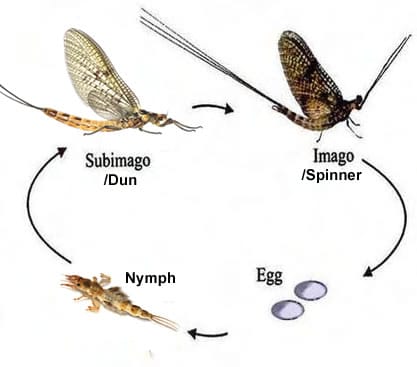 Many of the chalkstream owners and fishery managers do not allow nymph fishing in the early part of the season so as fly fishermen on these streams and rivers we have to imitate the adult stages of the fly.
Many of the chalkstream owners and fishery managers do not allow nymph fishing in the early part of the season so as fly fishermen on these streams and rivers we have to imitate the adult stages of the fly.
When the time is right these silt burrowing nymphs ascend to the surface and emerge as a Dun or Sub Imago, as the name almost suggests the flies are very dull in colouration with short tails. This process of emergence from the nymphal skin can take up to 30 seconds and is a very vulnerable time as the flies struggle to break through the surface tension of the water.
Once on the surface and now breathing air the flies have to quickly dry their wings in preparation for flight, this time can vary quite significantly depending on the weather. If sunny and warm this process almost looks instantaneous but if cold, overcast with dampness or rain in the air can take many seconds. When the wings are sufficiently dry the flies take to the air and head towards the nearest vegetation.
Here, usually attached to the underside of a leaf the insect transforms into the fully sexually mature fly, the Imago. Again the timing of this process is very much weather dependant and can vary from as little ½ hour to some days. It must be remembered that these insects once above water do not eat or drink so there is a finite time for mating to take place.
Late afternoon and into the evening the males will start to gather and dance rising and falling in plumes hoping to attract a female. Once mated the females return to the water to lay their eggs and complete the life cycle. Many authorities state that the time from egg to adult is around two years but there is now much evidence that in some river catchments in the south there are mayflies are now only taking one year to complete the cycle. Identical except for size it is not known whether this is an outcome of global warming or some other environmental factor.
Artificial Mayflies.
The choice of artificial can be somewhat bewildering but there are a few that have stood the test of time as well as some more recent patterns.
[one_half]
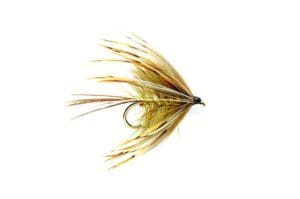
[/one_half] [one_half_last]
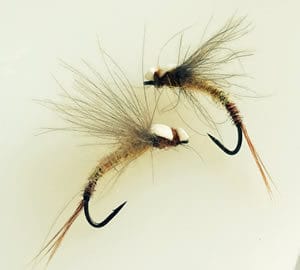
[/one_half_last]
[one_half]
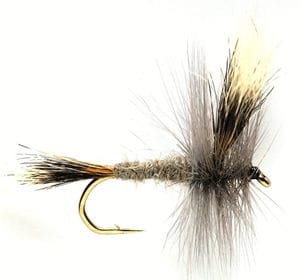
[/one_half][one_half_last]
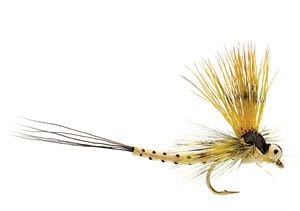
[/one_half_last]
[one_half]
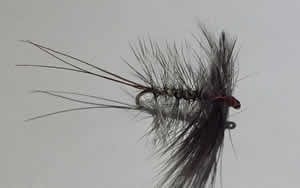
[/one_half][one_half_last]
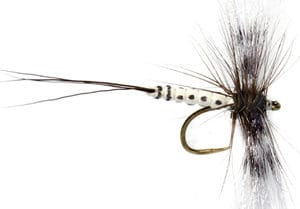
[/one_half_last]
The imitations we use are generally of a similar size to the natural and this can create spinning leader problems if using soft or light tippet. The artificial fly sizes will be in the order of 12 and 10 so step up the 4X or 3X tippet.
The X system can be somewhat confusing but it relates to the diameter of the tippet not the breaking strain.
The table below is general guide only.
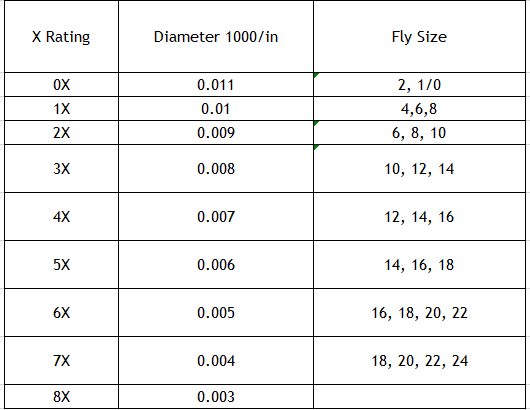
To book a prime mayfly day or for further information contact Bill Latham or call our office on +44(0)1980 847389.
